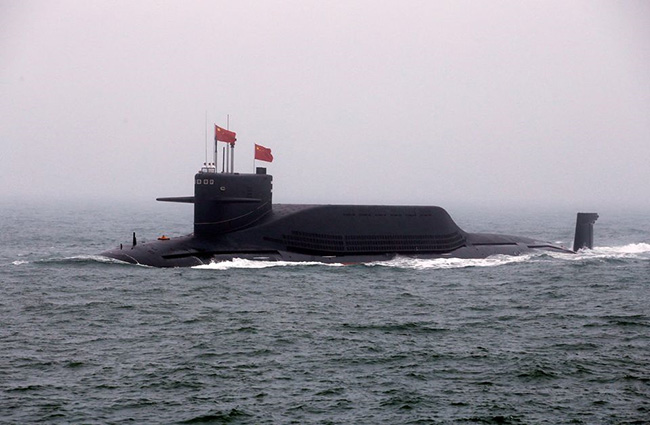A Royal Navy submarine was saved moments from disaster after it sunk towards crush depth.
Photo: ‘The Sun’
A Royal Navy nuclear sub sinking towards its crush depth was saved moments from disaster, informs ‘The Sun’.
A depth gauge failed on the decades-old Vanguard class vessel, carrying 140 crew and – Trident 2 doomsday – missiles in the Atlantic.
Such a catastrophe would also have triggered a nightmare salvage mission to recover the top-secret vessel and its nuclear reactor before the Russians got to the scene.
The sub was preparing to go on patrol when dials indicating its depth stopped working, leaving commanders to think it was level when it was still diving.
It was entering the “danger zone” when engineers at the back of the 490ft Vanguard-class vessel spotted a second gauge and raised the alarm.
A source told The Sun: “It’s not the engineers’ job to control the sub’s depth but they saw how deep they were and realised something was wrong.
"Technically the sub was still at a depth where we know it can operate, but if it ever has to go that deep the whole crew is piped to action-stations.
“That hadn’t happened. The sub wasn’t supposed to be there, and it was still diving. And if it had carried on going, it doesn’t really bear thinking about.”
The Sun is not naming the sub or the depths involved for security reasons.
A naval source said the near-miss had showed that safety systems worked.
They added: “If one system fails you can fall back on the other.”
Top Brass launched an urgent safety probe but insiders insisted the drama did not interrupt the UK’s nuclear deterrent.
At least one Royal Navy submarine with nuclear missiles has been on patrol continuously since 1969 to hit back in the event of a doomsday attack.
Britain has four Vanguard-class submarines but currently only two are operational.
One is having a major refit and the other is undergoing sea trials after repairs that ran £300million over budget.
The Navy said: “We do not comment on operations. Our submarines continue to be deployed globally, protecting national interests.”
 A Chinese nuclear-powered submarine took part in a 2019 naval parade off the eastern port city of Qingdao.
A Chinese nuclear-powered submarine took part in a 2019 naval parade off the eastern port city of Qingdao.
Photo: Reuters
The era of total U.S. submarine dominance over China is ending. New Chinese submarines and sensors to catch U.S. subs will alter the balance of power, writes ‘The Wall Street Journal’.
Now, China is narrowing one of the biggest gaps separating the U.S. and Chinese militaries as it makes advances in its submarine technology and undersea detection capabilities, with major implications for American military planning for a potential conflict over Taiwan.
Early this year, China put to sea a nuclear-powered attack submarine with a pump-jet propulsion system instead of a propeller, satellite imagery showed. It was the first time noise-reducing technology used on the latest American submarines had been seen on a Chinese submarine.
The Western Pacific is becoming more treacherous for U.S. submarines. Beijing has built or nearly finished several underwater sensor networks, known as the “Underwater Great Wall," in the South China Sea and other regions around the Chinese coast. The networks give it a much better ability to detect enemy submarines, according to Chinese military and academic texts.
The People’s Liberation Army, as China’s military is known, is getting better at finding enemy submarines by adding patrol aircraft and helicopters that pick up sonar information from buoys in the sea. Most of China’s navy now has the ability to deploy underwater listening devices called hydrophones on cables trailing ships or submarines.
In August, China conducted a submarine-hunting exercise lasting more than 40 hours in the South China Sea, involving dozens of Y-8 anti-submarine patrol aircraft. A few weeks earlier, the Chinese and Russian navies conducted a joint anti-submarine warfare exercise in the Bering Sea, off the coast of Alaska.
The developments mean the era of unchallenged dominance of the U.S. under the seas around China is ending.
In recent years, China has also rapidly expanded its surface fleet. It now exceeds the U.S. fleet by number of ships, although China’s ships are generally smaller and less sophisticated. In response, a larger percentage of the U.S. Navy has been deployed to the Pacific, including some of America’s most advanced ships and aircraft.
Chinese nuclear-powered attack submarines could be assigned on hunter-killer missions to target U.S. and allied submarines in the Taiwan Strait, increasing the difficulty of coming to Taiwan’s defense, Brent Sadler, a naval expert at the Heritage Foundation, told the WSJ. Simulations direct U.S. military intervention during a Chinese invasion of Taiwan generally assume U.S. submarines would operate near the strait to find and sink PLA warships.
Currently, China has six nuclear-powered attack submarines in addition to a diesel-electric variety developed through reverse engineering submarines purchased from the Soviet Union, the WSJ reported.
Given China’s massive shipbuilding capacity, Carlson predicted China could produce nuclear-powered submarines at triple the U.S. production rate once it decides on the next design, according to the WSJ.
Gen. Antony Cotton told Congress in March that China had equipped its existing ballistic missile submarines with new missiles capable of reaching the U.S. mainland while the submarines remain close to China, the WSJ reported.
read more in our Telegram-channel https://t.me/The_International_Affairs

 10:49 26.11.2023 •
10:49 26.11.2023 •























